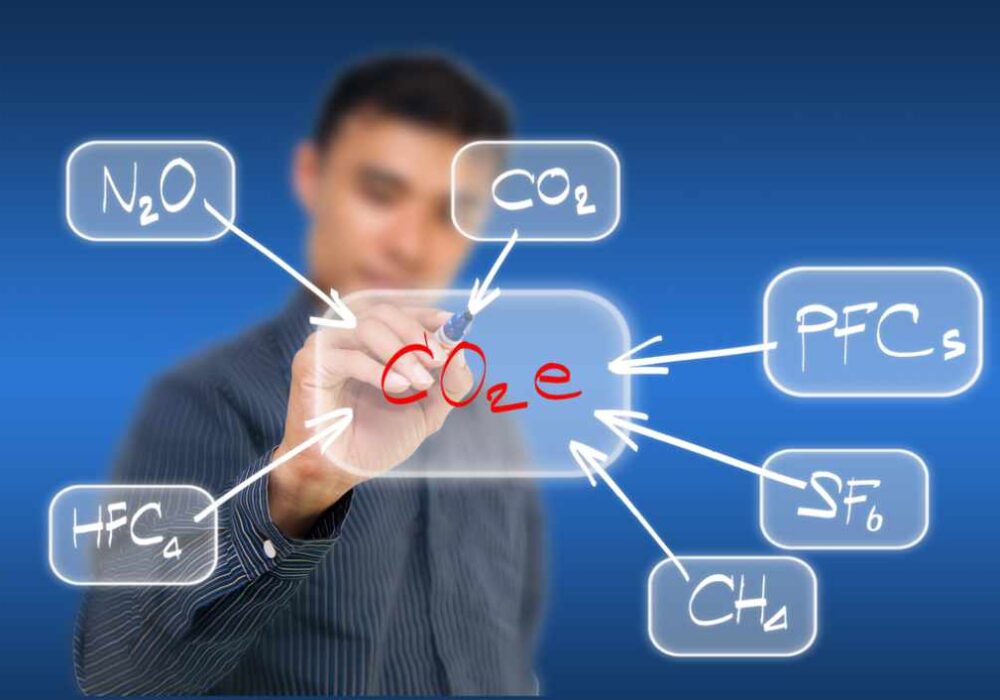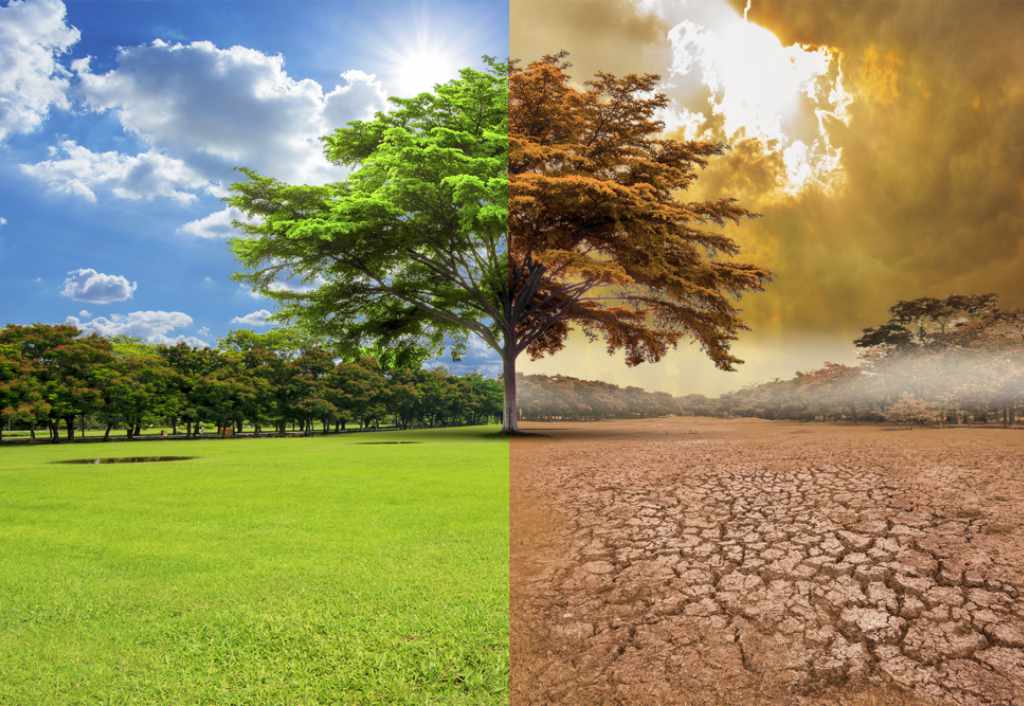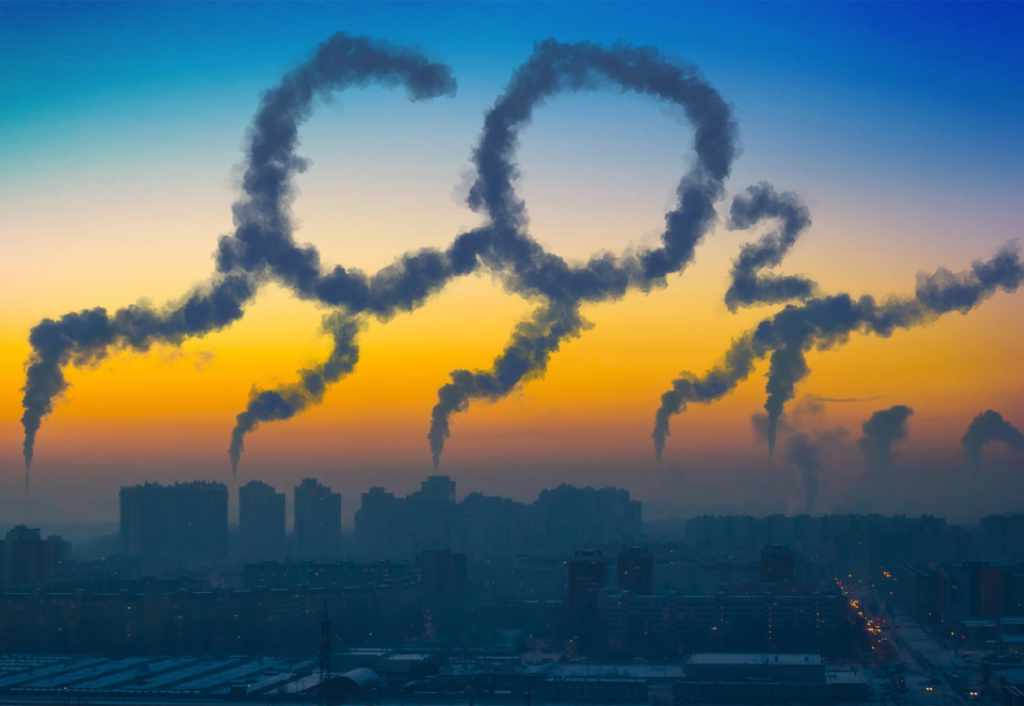Are you standing in the paint aisle, overwhelmed by the endless choices and unsure what…

What’s the difference between CO2 and CO2e?
CO2 CO2e difference:
These days, it’s hard not to hear about carbon dioxide (CO2) and its effects on climate change. It is all over the news and in the papers as the government pushes to lower the UK’s carbon footprint, creating a healthier atmosphere and a healthier planet.
On top of this, people are becoming more eco-conscious, and rightly so. We all have a duty to protect our planet for our children and our children’s children.
The two things that we need to analyse if we wish to lower our carbon footprint are our CO2 and CO2e emissions. So, what’s the difference between the two?
CO2e means “carbon dioxide equivalent”. In layman’s terms, CO2e is a measurement of the total greenhouse gases emitted, expressed in terms of the equivalent measurement of carbon dioxide. On the other hand, CO2 only measures carbon emissions and does not account for any other greenhouse gases.
Different greenhouse gases have different levels of Global Warming Potential (GWP), so CO2e provides a more comprehensive measure of the total impact of greenhouse gas emissions.
Here is everything you need to know about CO2e, why it’s important, and how you can calculate your CO2e emissions.
What is CO2e?
Carbon dioxide equivalents (CO2e) are a measurement of the impact of greenhouse gases on the environment. This measurement works by showing the total amount of greenhouse gas emissions in terms of the equivalent measurement of carbon dioxide.
Other greenhouse gases, like methane, have different global warming potentials (a measurement of the potential impact a greenhouse gas has on global warming over a given period) compared to carbon dioxide. By converting all greenhouse gas emissions into CO2e units, it becomes easier to compare the impact of different types of emissions and to create strategies for reducing GHG emissions.
If you’re looking to lower your carbon footprint, then it’s important that you don’t just look at your carbon dioxide emissions. As much as they are important, carbon dioxide isn’t the only thing that contributes to global warming. If you don’t measure the impact of other greenhouse gases, like methane or nitrous oxide, then you could still be damaging the planet by releasing them into the atmosphere.
What are CO2e emissions?

Carbon dioxide equivalent emissions are a measure of how much greenhouse gas is emitted into the atmosphere.
Greenhouse gases include carbon dioxide, methane, nitrous oxide, and fluorinated gases (F gases), which are emitted from various human activities, like burning fossil fuels.
Every greenhouse gas has a different global warming potential (GWP), which means that their impact on climate change varies. For example, methane has a much higher GWP than carbon dioxide, so emitting one tonne of methane has a greater impact on the climate than emitting one tonne of carbon dioxide.
CO2e emissions are important because they contribute to climate change. This problem has the potential to negatively affect many aspects of our environment and our health. As more greenhouse gases are released, the Earth’s surface temperature will rise. This will cause sea levels to rise, due to ice caps melting. Too many greenhouse gases lingering in the atmosphere lead to ‘smog’. Smog looks like fog, but it is harmful to your health and causes respiratory problems.
How to calculate CO2e
To calculate CO2e, you need to measure the amount of greenhouse gas emissions produced and their equivalent global warming potential (GWP).
To calculate the greenhouse gas emissions released by a particular action, you first need to multiply the mass of the equivalent gas by its global warming potential. However, you’ll need to convert it into tonnes first.
Greenhouse gases are usually represented in kilograms (kg) rather than tonnes (t). To convert kilograms into tonnes, you need to divide the kilograms by 1,000. For example, 10,000kg of carbon would equate to 10t.
There are also carbon dioxide emissions calculators online that calculate how much carbon certain tasks produce. These carbon calculators will tell you the carbon equivalents of certain tasks. For example, some carbon calculators will tell you how much carbon is released into the atmosphere every time you drive a mile. Alongside being useful, these carbon calculators are also eye-opening!
You can look at how many miles you drive a year, and then use these calculators to work out how much carbon you’re producing. It might be enough to make you decide to cycle instead!
What is the definition of CO2e?

CO2e stands for ‘carbon dioxide (CO2) equivalent’. It is a measurement used to calculate the impact that greenhouse gases have on climate change. Atmospheric carbon dioxide levels are often blamed for causing climate change. However, there are many more harmful gases at play, like methane and nitrous oxides. CO2e is a way of measuring the other harmful gases that contribute towards climate change.
The CO2e concept takes into account the fact that different greenhouse gases have different warming effects. For example, methane has a warming effect that is around 28 times greater than carbon dioxide over a 100-year time frame, but it breaks down more quickly in the atmosphere. So, one tonne of methane emissions would be equivalent to 28 tons of CO2 emissions over 100 years-CO2 CO2e difference.
Helping you reduce your atmospheric carbon dioxide emissions, one coat of paint at a time
You can do your bit to reduce the effects of climate change and lower your carbon footprint by using our carbon capture paints. They use the lime cycle to absorb harmful carbon dioxide from the atmosphere during the 28 day curing process, resulting in clean air and a positive step towards lowering the effects of climate change.
View our full range of carbon capture paints by clicking here.




This Post Has 0 Comments